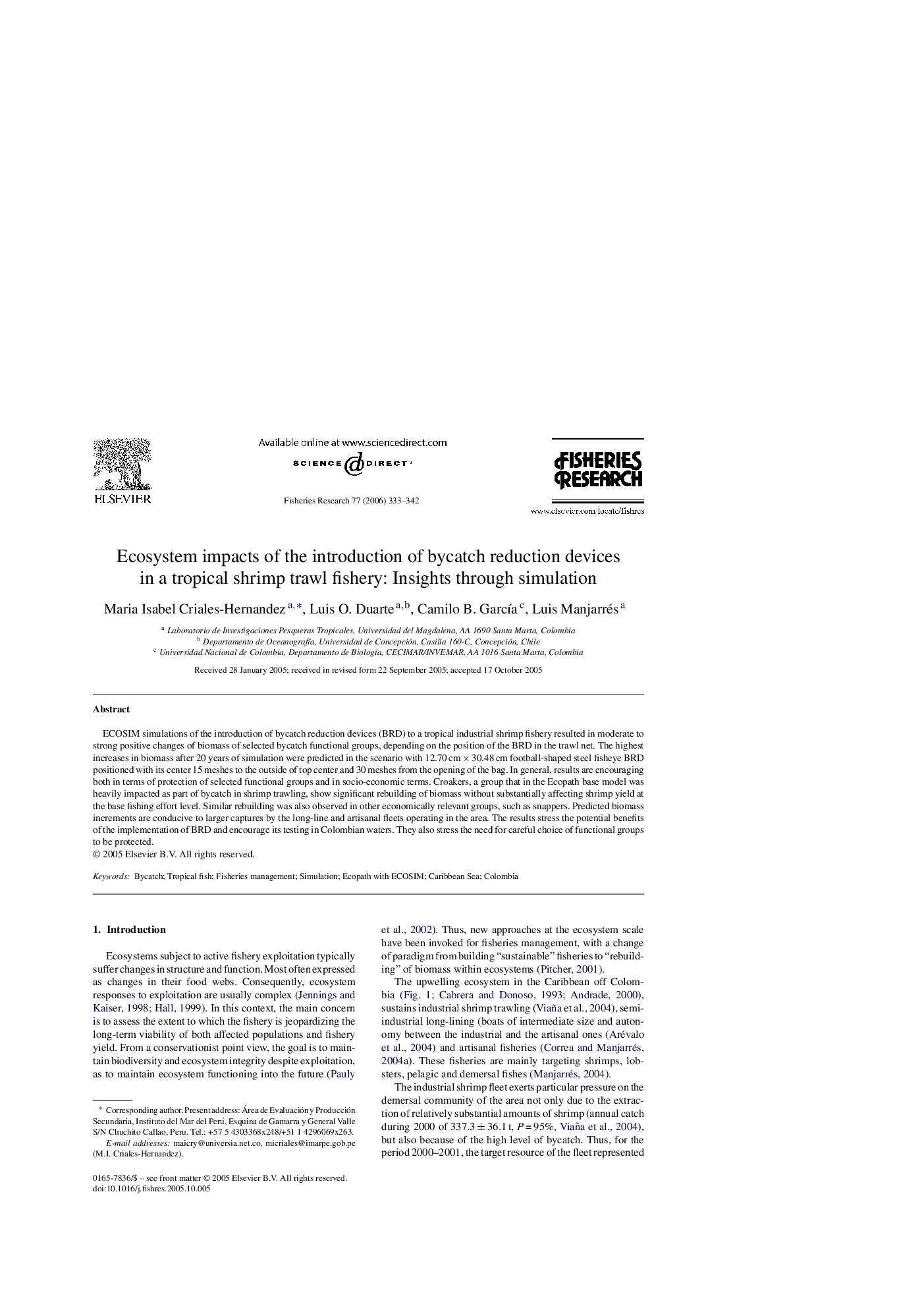| Article ID | Journal | Published Year | Pages | File Type |
|---|---|---|---|---|
| 4545051 | Fisheries Research | 2006 | 10 Pages |
ECOSIM simulations of the introduction of bycatch reduction devices (BRD) to a tropical industrial shrimp fishery resulted in moderate to strong positive changes of biomass of selected bycatch functional groups, depending on the position of the BRD in the trawl net. The highest increases in biomass after 20 years of simulation were predicted in the scenario with 12.70 cm × 30.48 cm football-shaped steel fisheye BRD positioned with its center 15 meshes to the outside of top center and 30 meshes from the opening of the bag. In general, results are encouraging both in terms of protection of selected functional groups and in socio-economic terms. Croakers, a group that in the Ecopath base model was heavily impacted as part of bycatch in shrimp trawling, show significant rebuilding of biomass without substantially affecting shrimp yield at the base fishing effort level. Similar rebuilding was also observed in other economically relevant groups, such as snappers. Predicted biomass increments are conducive to larger captures by the long-line and artisanal fleets operating in the area. The results stress the potential benefits of the implementation of BRD and encourage its testing in Colombian waters. They also stress the need for careful choice of functional groups to be protected.
